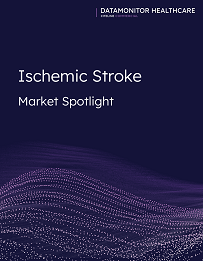Report Library
All Reports
Datamonitor Healthcare CV&Met: Ischemic Stroke Market Spotlight
September 15, 2025
An ischemic stroke occurs when a blood clot inhibits a vessel supplying blood to the brain. A lack of blood supply leads to neuronal cells dying due to a lack of oxygen. Cell death impairs the function of the affected region(s) of the brain, and as a result, the associated body function it controls is disrupted. Ischemic strokes are associated with rapidly developing symptoms, including paralysis of the body, speech and vision impediments, and memory loss.
Based on global estimates from the World Health Organization (WHO), stroke is the second-leading cause of death and the third-leading cause of disability. Approximately 85% of strokes are ischemic strokes and are mainly caused by atherosclerosis, a condition in which fat deposits damage the lining of blood vessels, and in doing so cause blood clots to develop. Fatty deposits can cause strokes by two mechanisms: by a cerebral thrombosis, whereby a blood clot (thrombus) develops in the affected vessel; or by a cerebral embolism, in which a blood clot forms in a different site and travels into the brain through the circulatory system. Other medical conditions that can trigger clot formation include small vessel disease, atrial fibrillation, and arterial dissection.
This Datamonitor Healthcare report contains a Market Spotlight module.
| Indications Covered: | Ischemic Stroke |
